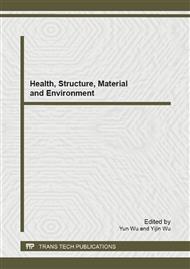[1]
Amorim, L. Houses of recife: from diachrony to synchrony. Paper presented at the the Third International Space Syntax Symposium, Atlanta. (2001, 7 -11, May).
Google Scholar
[2]
Bafna, S. (2003). Space Syntax: A Brief Introduction to Its Logic and Analytical Techniques. Environment and Behavior, 35(1), pp.17-29.
DOI: 10.1177/0013916502238863
Google Scholar
[3]
Bellal, T. (2004). Understanding home cultures through syntactic analysis: the case of Berber housing. Housing, Theory and Society, 21(3), pp.111-127.
DOI: 10.1080/14036090410000471
Google Scholar
[4]
Bowser, B. J., & Patton, J. Q. (2004). Domestic Spaces as Public Places: An Ethnoarchaeological Case Study of Houses, Gender, and Politics in the Ecuadorian Amazon. Journal of Archaeological Method and Theory, 11(2), pp.157-181.
DOI: 10.1023/b:jarm.0000038065.43689.75
Google Scholar
[5]
Bustard, W. Space, evolution, and function in the houses of Chaco Canyon. Environment and Planning B: Planning and Design, 26(2), (1999), p.219 – 240.
DOI: 10.1068/b260219
Google Scholar
[6]
Hillier, B. Space is the machine : a configurational theory of architecture. Cambridge, England: Cambridge University Press. (1996).
Google Scholar
[7]
Hillier, B., Hanson, J., & Graham, H. (1987). Ideas are in things: an application of the space syntax method to discovering house genotypes. Environment and Planning B: Planning and Design, 14(4), p.363 – 385.
DOI: 10.1068/b140363
Google Scholar
[8]
Penn, A. (2003). Space Syntax And Spatial Cognition: Or Why the Axial Line? Environment and Behavior, 35(1), pp.30-65.
DOI: 10.1177/0013916502238864
Google Scholar


